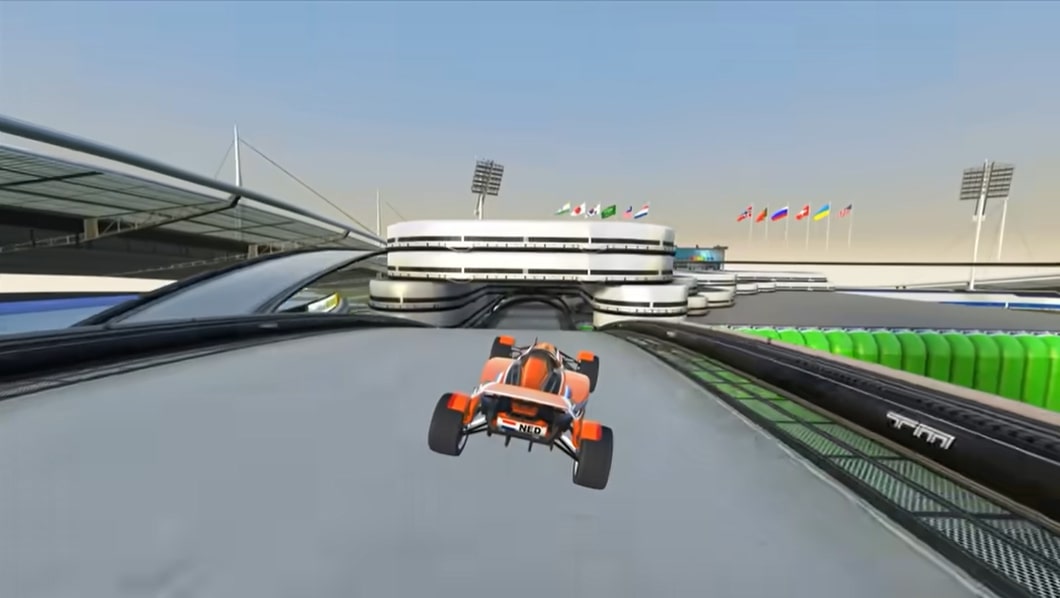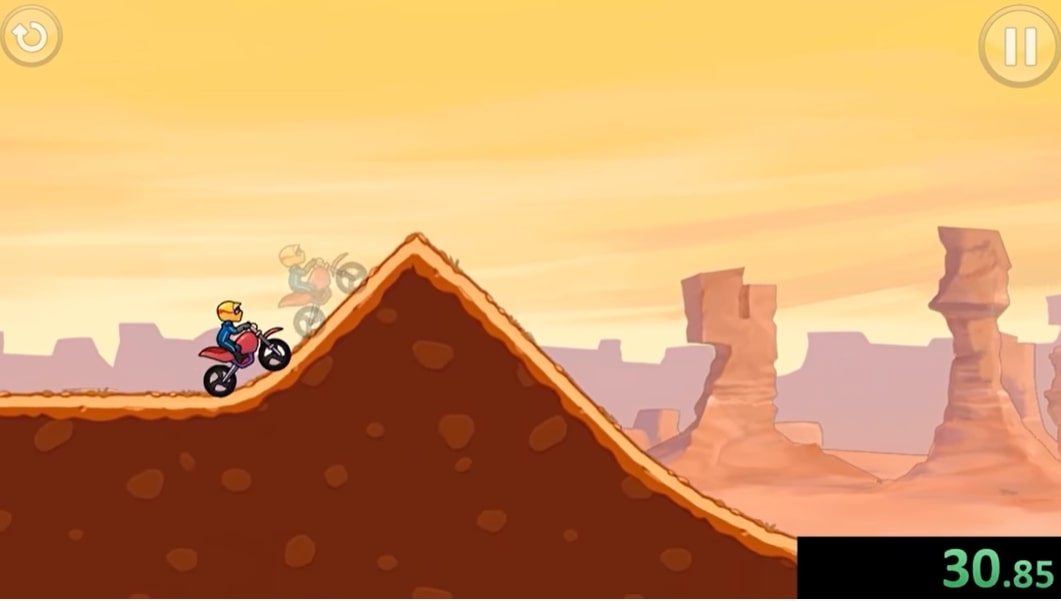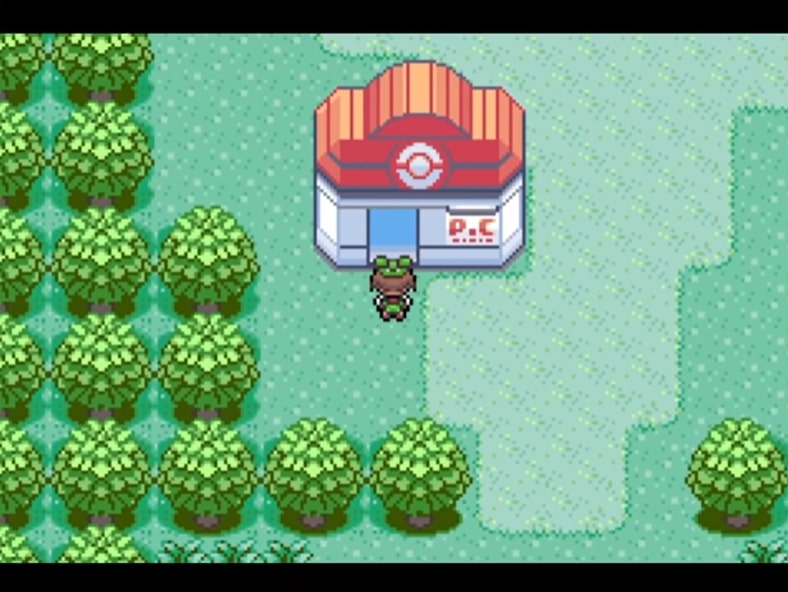Speedrunning is the act of completing a game or completing an aspect of the game in the fastest way possible. We’ll discuss the motivations and the history of speedrunning a bit later, for now, let’s familiarise ourselves with some terminology.
Each attempt at completing the game is called a “run” by the speedrunning community. People who complete speedruns of games are called “runners” or “speedrunners.”
Often, a game will be divided into different categories. For example, a game could have an Any% category and a 100% category.
Any% is the category, and ruleset, that is most commonly used in speedrunning. This means that the runner has to complete the game by any means necessary as quickly as possible. Sometimes it involves manipulating the game in order for the credits to roll immediately upon starting, and sometimes it’s a long process of completing levels quickly in a race to the final level.
On the other hand, there is the 100% category. This category requires the runner to complete 100% of the game for the run to be complete. In some games this requires collecting hundreds of collectibles and in other games completing this category is much more difficult. So, what is speedrunning? Continue reading to find out.
Motivations Behind Speedrunning
This is a very difficult distinction to make, after all, each person has their own rationales and reasons behind the passions that drive them. Is it simple to define why an athlete performs their sport? Well, speedrunning is not too dissimilar to sports! Each runner spends hours and hours training and practising the game in order to surpass their own and other runners’ speed records.
In addition to the self-improvement and competitive nature of speedrunning a lot of runners cite passion as their main driving force. Passion for the game, and passion for gaming in general. It isn’t uncommon that a gamer who has a lot of nostalgia or fond memories of a game would return to that game. The problem with returning to a game, and playing it once more, is that it has diminishing returns of pleasure.
This is why, inevitably, some players decide to play the game a different way than usual. That’s where speedrunning comes in. It’s uncommon for the experience of speedrunning a game to be similar to playing the game normally. These normal playthroughs are called casual playthroughs. Casual playing essentially involves playing the game as the game developer intended.
For players who have played the game casually many times, the only way to mix up the experience is by attempting to speedrun the game. Speedruns often take advantage of unintended bugs such as skipping entire sections of the game, falling through the floor, flying across levels, defeating enemies with ease, et cetera. Playing the game this way freshens up the experience and allows a player to squeeze more entertainment out of a game they have already played many times.
That being said, it’s not always the case that speedrunners are massive fans of the game and have played it casually a lot. Some speedrunners treat speedrunning akin to freelance gigs. They will speedrun games they’ve never played, or at least very seldomly played. They do this because the speedrun version of the game interests them more than the casual experience.
History of Speedrunning

Early video games such as arcade classics like Pacman, Asteroids, Donkey Kong didn’t leave a lot of room for speedrunning since the goal of those games was to achieve a very high score. One of the first games that were conventionally used for speedrunning was Dragster. This game has an incredible, and controversial history.
The aim of this game was to race across the screen while avoiding obstacles. After the race is complete, the game would display your time on the screen. In 1982, two years after the game’s release, a gamer by the name of Todd Rogers claimed a time of 5.51 seconds. His time was established as the world record earning him a Guinness World Record and praise from Activision, the company that designed the game.
Years later, it came to light that Todd Rogers didn’t actually get this score, and cheated. There was ample evidence that confirms his cheating, including testimony from a speedrunner who dissected the game’s programming. This speedrunner proves that the score Todd Rogers claimed to achieve isn’t even possible. The speedrunner who did the analysis concluded that with a modified version of the game, executed perfectly, the fastest time would be 5.57 seconds. Todd Rogers claims that he did not cheat and went so far as to initiate a lawsuit against Twin Galaxies, a popular website that hosts speedrunning leaderboards and news.
Throughout the ’90s and early 2000s speedrunning as a culture and as a hobby was continuing to grow around the world. By the year 1998, a young man named Nolan “Radix” Pflug started a website called Quake Playthroughs. This was a website where Quake players could submit physical VHS cassettes of their runs to be verified, archived, and catalogued by Nolan “Radix” Pflug.
This website quickly grew to accommodate more than Doom speedruns. It wasn’t long before they were accepting speedruns from a variety of games. It was then that the name of the website changed to Speed Demos Archive.
This website acted as the home for the speedrunning community at large. Runners from a huge variety of games would submit their runs here, eventually in digital format such as mp4 files. Moderators from each individual game would look over the video file, verify it’s integrity and place the runner on the leaderboard according to the total time it took them to complete the run.
ADGQ & Other Speedrunning Events

Speedrunning eventually grew large enough that community organisers and people with a goal of bringing runners together sprung up and began hosting increasingly large events showcasing speedrunning. The most notable event related to speedrunning is called Awesome Games Done Quick (AGDQ) and it’s summer counterpart Summer Games Done Quick (SGDQ). These events were hosted by the aforementioned Speed Demos Archive until a separate company was formed later on.
The format of the event is as follows. The organisers field speedrunning pitches from all over the world. These are emails and forms that are sent to the organisers pleading the case for why their game and their run should be featured in the event. Once the organisers select a huge list of speedrunners and games, they invite them to come down to the in-person event, usually hosted in a hotel room exhibition area. The organisers set up screens, chairs, and a huge array of consoles and computers to allow speedrunners from all platforms and all games to broadcast their run to the live audience around the world.
Once the speedrunners are at the event, and the event has begun. The speedrunners play their respective games according to predetermined time slots much like the broadcasting schedule of a regular tv network. Some games take only 10 minutes to complete, while others consist of a 6 hour play session. After the speedrunner completes their game, the show simply moves onto the next speedrunner until the schedule has been completed.
The entire event, including a camera to capture the audience’s reactions and antics, is recorded and broadcast live. Viewers from all around the world tune in at their (in)convenience to watch the spectacle unfold.
Some of the games being played during this event are new, and some are old. There is room for every gamer to either feel nostalgic or impressed by the cutting edge games being broken to pieces by the expert speedrunners.
All throughout these events, money is being raised for a particular cause or charity. SGDQ & AGDQ raise millions of dollars from thousands of viewers and fans, which is why they are considered the most significant events in the speedrunning community.
Another very notable event is ESL, European speedrunning league. This event is primarily focused on bringing together European speedrunners to showcase speedrunning in a very similar way to the organisers of SGDQ & AGDQ.
Speedrunning Nuances & Gamemodes
While there are regular speedrunning activities such as playing the game as fast as possible, the community has expanded the possibilities by creating different ways a game can be speedrun. Here’s a list of four common derivations or alternatives to standard speedrunning.
Tool-Assisted Speedruns

It wouldn’t be an article discussing speedrunning if we didn’t cover tool assisted speedruns, more commonly known as TAS runs by the speedrunning community. TAS runs are an incredible evolution of speedrunning. This is where a speedrunner will design a computer program to assist them in their endeavour.
Sometimes this involves creating software that displays back-end game variables to the player. These types of variables would normally not be visible to the player, and in some cases, can be extremely valuable for determining outcomes inside each individual speedrun. Another popular example is using emulation technology that allows the player to slow down or save their progress in contexts that the developer normally doesn’t allow.
It goes without saying that these types of runs usually boast much shorter recorded completion times than when the speedrunners play unassisted.
Speedrun Races & Competitive Speedruns

Speedrunning is largely a solo endeavour where a gamer will sit down in front of the computer or console and compete with their own records and records from around the world. However, similarly to most activities, a competitive format emerged eventually. A speedrun race is when two or more speedrunners get together, either virtually or physically, and speedrun the game.
Their individual goal is to reach the end of the game before the other racers. Races between speedrunners do not need to take place in a multiplayer, in fact, these races almost never take place in a multiplayer game environment. Each racer simply gets to the start of the game and they all start simultaneously. This requires that each racer has its own machine to play on, whether that’s a console or computer. Often these events are broadcasted or recorded in order for an audience to enjoy the mayhem.
Races can often be chaotic and stressful to watch and participate in. Each runner will have to decide what risks they want to take in order to mitigate falling behind. In combination with on-the-fly decision-making about their route, the racers will have to perform tricks associated with the run lest they risk being overtaken by the other racers.
Randomisers

A randomizer or randomised speedrun is when speedrunners use external programs to randomise elements in a game. This guarantees that each run will be unique and therefore the runner cannot overly plan their route before-hand. An example of a randomised run would be Final Fantasy randomizers where the items contained inside chests and enemies the player will face will be entirely random. This creates a lot of brand new challenges for the runner because they won’t necessarily be able to predict where they will have to go and what items and abilities they might need.
Randomisers can be tweaked to be more or less extreme. In some cases, this means that hardly any variation is introduced and in other cases the game is almost entirely random. Eventually, the speedrunning community creates specific pre-set variables for these randomisers in order to standardise the category.
Blindfolded Runs
As the name suggests, blindfolded runs are when a speedrunning player plays the game blindfolded. How is this possible? Well, first of all, the speedrunner needs to familiarise themselves very intimately with the game and the speedrunning route before they attempt to perform a blindfolded run.
The preparation doesn’t stop there. Since mistakes are common throughout a speedrun, the runner will need to formulate a system that allows them to reset their position and generally know where they are in the game at any time. Otherwise, they risk making a mistake and being entirely lost.
The most common technique for keeping track of the player’s position when they can’t see is using sound queues. Often, in games, creatures and environments emit a variety of sounds. These sounds are often skewed towards different audio channels and volumes based on proximity and direction.
This allows the speedrunner to roughly estimate where they are standing and perform a variety of movements to ensure they are back to where they want to be. As you can imagine, this requires an almost encyclopaedic memory of the level layouts and locations and frequencies of various sounds.
Speedrunning is constantly evolving and the topics covered in this article may soon no longer represent an accurate representation of the industry as a whole. That is the beauty of new and bustling communities. They are always coming up with new ideas, new activities, and new controversies.
Question: What is a Runner?
Answer: A runner is someone who speedruns games.
Question: What is a Run?
Answer: A run is a single playthrough of a game made by a speedrunner attempting to beat their own personal, or world record.
Question: What is the Difference Between Speedrunning and Playing the Game “Casually?”
Answer: A casual playthrough is when the game is played as the developer intended, especially without manipulating the game’s mechanics or using bugs in any way. In some cases there are very few differences between the experience a speedrunner has and a casual player has. Much more commonly, a casual playthrough is slow but it makes sense within the context of the game’s mechanics and lore.
A speedrun on the other hand will have players falling through the world, flying at blazing fast speeds, teleporting, skipping entire sections, and many more things that the developer did not intend on being possible.
Question: How do I get Into Speedrunning?
Answer: It’s easy! Simply practice playing a game and try to get faster and faster. If you want a shortcut to achieving wicked speed, check out the world record holder’s run on YouTube or Speedrun.com for the game you’re interested in and try to copy some of what they do. It will take a lot of time to become as fast as them, but it’s entirely possible!
Question: What Games can be Candidates for Speedrunning?
Answer: There isn’t anything that comes to mind that would prevent a game from being run by a speedrunner. As long as the game has a way to determine the beginning and the end, you can speedrun it. There are documented speedrun leaderboards for puzzles games, strategy games, shooting games, racings games, and dozens of other genres!
Conclusion
Speedrunning is constantly evolving and the topics covered in this article may soon no longer represent an accurate representation of the industry as a whole. That is the beauty of new and bustling communities. They are always coming up with new ideas, new activities, and new controversies.
Further readings:
- Minecraft Achievements Guide – Advancements
- Fallout 4 Achievements Guide
- Mass Effect Legendary Edition Achievements Guide
- Speedrunning Spotlight – Seeker TV Interview
- Stray Speedrunning Guide
- Spyro the Dragon Speedrun
- Half-Life Speedrun Guide
- Ocarina of Time Speedrun
- KH3 Speedrun Guide
- Monster Hunter World Speedrunning Guide
- GTA 5 Speedrun Guide
- Dishonored Speedrun Guide
- Just Cause 3 Speedrun Guide
- Elden Ring Speedrun Guide
